We manufacture a comprehensive range of standards for analytical instruments such as cell analyzers, particle sizers, flow cytometers, and fluorescence microscopes. Our catalog includes NIST Traceable Particle Size Standards, SureCount™ Count Standards, ViaCheck™ Cell Viability and Concentration Controls, in addition to a broad range of fluorescent and antibody capture beads for flow cytometry and fluorescent beads and slides for imaging.
Instrument Standards

VIACHECK™ VIABILITY AND CONCENTRATION STANDARDS
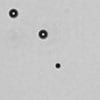
Our ViaCheck™ standards mimic the characteristics of live and dead cells in the trypan blue dye exclusion method and may be used to support validation and QC of image-based cell viability analyzers (e.g. Vi-CELL®) used in biomanufacturing programs. ViaCheck™ Viability Controls are supplied at ~1.0 x 106 beads / mL and are available in a range of live/dead ratios. ViaCheck™ Concentration Controls are supplied at the noted concentrations. For information on proper mixing and sampling, see TSD 0706: Handling & Pipetting Concentration Standards. request a copy of Optimization of Vi-CELL® XR Settings for Calibration Checks Using ViaCheck™ Controls & ViaCheck™ for Cell Viability Analyzers: Best Practices here, or watch our ViaCheck protocol video.
How low can you go? See our TSD 0712 Repeatability of Coulter Z2 and Vi-CELL Counts Using our NEW ViaCheck™ 0.5e+6 Concentration Controls.
| Catalog Number | Description | Volume (mL) |
| VC10B | ViaCheck™ 0% Viability Control | 20 |
| VC25B | ViaCheck™ 25% Viability Control | 20 |
| VC20B | ViaCheck™ 50% Viability Control | 20 |
| VC30B | ViaCheck™ 75% Viability Control | 20 |
| VC40B | ViaCheck™ 90% Viability Control | 20 |
| VC50B | ViaCheck™ 100% Viability Control | 20 |
| VC50N | ViaCheck™ Concentration Control (0.5 × 106) | 20 |
| VC60N | ViaCheck™ Concentration Control (1 × 106) | 20 |
| VC70N | ViaCheck™ Concentration Control (4 × 106) | 20 |
| VC80N | ViaCheck™ Concentration Control (8 × 106) | 20 |
VIACHECK™ VIABILITY AND CONCENTRATION STANDARDS – SINGLESHOTS™
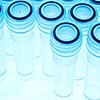
ViaCheck™ SingleShots™, affordable single-use QC. Mix, dispense & run for confirmation of live/dead ratios and counts. ViaCheck™ SingleShots™ minimize error and maximize efficiency by circumventing potential human error from repeated bottle resuspension & pipetting steps. To request a copy of Optimization of Vi-CELL® XR Settings for Calibration Checks Using ViaCheck™ Controls & ViaCheck™ for Cell Viability Analyzers: Best Practices, click here or watch our ViaCheck protocol video.
| Catalog Number | Description | Units |
| VC10BSS | ViaCheck™ 0% Viability Control SingleShots™ | 25 or 75 |
| VC25BSS | ViaCheck™ 25% Viability Control SingleShots™ | 25 or 75 |
| VC20BSS | ViaCheck™ 50% Viability Control SingleShots™ | 25 or 75 |
| VC30BSS | ViaCheck™ 75% Viability Control SingleShots™ | 25 or 75 |
| VC40BSS | ViaCheck™ 90% Viability Control SingleShots™ | 25 or 75 |
| VC50BSS | ViaCheck™ 100% Viability Control SingleShots™ | 25 or 75 |
| VC50NSS | ViaCheck™ Concentration Control (0.5 × 106) SingleShots™ | 25 or 75 |
| VC60NSS | ViaCheck™ Concentration Control (1 × 106) SingleShots™ | 25 or 75 |
| VC70NSS | ViaCheck™ % Concentration Control (4 × 106) SingleShots™ | 25 or 75 |
| VC80NSS | ViaCheck™ % Concentration Control (8 × 106) SingleShots™ | 25 or 75 |
REFERENCES
- Kaminski RW, Wu M, Turbyfill KR, Clarkson K, Tai B, Bourgeois AL, Van De Verg LL, Walker RI, Oaks EV. (2014) Development and preclinical evaluation of a trivalent, formalin-inactivated Shigella whole-cell vaccine. Clin Vaccine Immunol; 21(3):366-382.
- Cadena-Herrera D, Esparza-De Lara JE, Ramírez-Ibañez ND, López-Morales CA, Pérez NO, Flores-Ortiz LF, Medina-Rivero E. (2015) Validation of three viable-cell counting methods: manual, semi-automated, and automated. Biotechnol Reports; 7:9-16.
- Lew C, Gomez J, Rhyner M (2012) Instrument-to-instrument Variability in the Vi-CELL Automated Viability Analyzer. Beckman Coulter Life Sciences
- Chen A, Leith M, Tu R, Tahim G, Sudra A, Bhargava S. (2017) Effects of diluents on cell culture viability measured by automated cell counter. PLoS One; 12(3):e0173375.
- Pagliuca F W, Millman JR, Gürtler M, Segel M, Van Dervort A, Ryu JH, … & Melton DA. (2014). Generation of functional human pancreatic β cells in vitro. Cell, 159(2), 428-439.
FLUORESCENCE REFERENCE STANDARDS – FLOW
We offer microspheres labeled with traditional dyes/stains that may be used as standards to support flow cytometric assays in cell cycle analysis or cell viability determinations. Beads may be used for routine instrument set-up and QC, or as test-specific standards. For additional information regarding cell cycle analysis, see our Cell Cycle Analysis brochure. See also our full range of Fluorescence Reference Standards .
| Catalog Number | Description |
| 897 | Acridine Orange |
| 906 | DAPI |
| 891 | Fluorescein (FITC) |
| 894 | Hoechst 33342 |
| 892 | Propidium Iodide |
VIABILITY DYE COMPENSATION STANDARD – FLOW
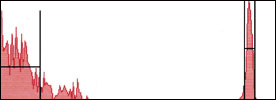

Viability Dye Compensation Standards are suitable for labeling with LIVE / DEAD® stains or other amine-reactive dyes to generate compensation standards for flow cytometric analyses. Beads are not suitable for labeling with DNA stains such as propidium iodide, DAPI, or SYTOX®, and users should contact us for discussion if uncertain as to the compatibility of a specific dye or stain. Supplied at ~1e+7 beads/mL.
| Catalog Number | Description |
| 450 | Viability Dye Compensation Standard, 4µm |
| 451 | Viability Dye Compensation Standard, 8µm |
REFERENCES
- Estes, Myka L., et al. “Identification of endothelial cells and progenitor cell subsets in human peripheral blood.” Current protocols in cytometry (2010): 9-33.


Though particle counting technology applications are diverse, there is a common need for instrument validation and ongoing QC. Microsphere-based particle count standards may be used to validate liquid counters across their dynamic ranges and to ensure continued capability through the performance of daily QC checks. The use of a reference material permits the standardization of results between runs, instruments and laboratories, and over time. Our particle count standards include both general and instrument-focused (flow cytometer, cell viability analyzer) controls.
SURECOUNT™ PARTICLE COUNT STANDARD
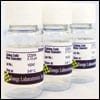

SureCount™ standards are suspensions of polymer microspheres intended for the validation and monitoring of particle counters and supporting sample preparation processes. The diameters of the SureCount™ standards are traceable to NIST Standard Reference Materials. The standards are supplied as ~1 x 106 microspheres/mL aqueous suspensions in 10mL volumes, and each bottle is provided with a Certificate of Traceability. For information on proper mixing and sampling, see TSD 0706: Handling & Pipetting Concentration Standards.
| Catalog Number | Product Data Sheet | Nominal Mean Diameter (µm) | Volume (mL) |
| CC03N | PDS 733.pdf | 3 | 10 |
| CC05N | PDS 733.pdf | 5 | 10 |
| CC10N | PDS 733.pdf | 10 | 10 |
| CC15N | PDS 733.pdf | 15 | 10 |
REFERENCES
- Kim J, Kim E, Bae S, Kwon S, Chun H.(2013) Potentiometric Multichannel Cytometer Microchip for High-throughput Microdispersion Analysis Anal. Chem.85 (1), pp 362–368
- Garzio LM, Steinberg DK, Erickson M, & Ducklow HW. (2013). Microzooplankton grazing along the Western Antarctic Peninsula. Aquatic Microbial Ecology, 70(3), 215-232.(Cat. CC10N, SureCount 10µm)
- Bekeschus S, Moritz J, Schmidt A, & Wende K. (2017). Redox regulation of leukocyte-derived microparticle release and protein content in response to cold physical plasma-derived oxidants. Clinical Plasma Medicine, 7, 24-35.
FLOW CYTOMETRY ABSOLUTE COUNT STANDARD™


| Catalog Number | Nominal Mean Diameter (µm) |
| 580 | Flow Cytometry Absolute Count Standard™ |
REFERENCES
- Heinrich LF, Andersen DK, Cleasby ME, & Lawson C. (2015). Long-term high fat feeding of rats results in increased numbers of circulating microvesicles with pro-inflammatory effects on endothelial cells. British Journal of Nutrition, 113(11), 1704-1711.
VIACHECK™ CONCENTRATION CONTROLS
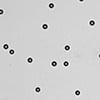

Our ViaCheck™ standards mimic the characteristics of live and dead cells in the trypan blue dye exclusion method and may be used to support validation and QC of image-based cell viability analyzers (e.g. Vi-CELL®) used in biomanufacturing programs. ViaCheck™ Concentration Controls are supplied at the noted concentrations. For information on proper mixing and sampling, see TSD 0706: Handling & Pipetting Concentration Standards. or to request a copy of Optimization of Vi-CELL® XR Settings for Calibration Checks Using ViaCheck™ Controls & ViaCheck™ for Cell Viability Analyzers: Best Practices, click here.
| Catalog Number | Description | Volume (mL) |
| VC50N | ViaCheck™ Concentration Control (0.5 × 106) | 20 |
| VC60N | ViaCheck™ Concentration Control (1 × 106) | 20 |
| VC70N | ViaCheck™ % Concentration Control (4 × 106) | 20 |
| VC80N | ViaCheck™ % Concentration Control (8 × 106) | 20 |
VIACHECK™ CONCENTRATION CONTROLS – SINGLESHOTS™



ViaCheck™ SingleShots™, affordable single-use QC. Mix, dispense & run for confirmation of live/dead ratios and counts. ViaCheck™ SingleShots™ minimize error and maximize efficiency by circumventing potential human error from repeated bottle resuspension & pipetting steps. To request a copy of Optimization of Vi-CELL® XR Settings for Calibration Checks Using ViaCheck™ Controls & ViaCheck™ for Cell Viability Analyzers: Best Practices, click here.
| Catalog Number | Description | Units |
| VC50NSS | ViaCheck™ Concentration Control (0.5 × 106) SingleShots™ | 25 or 75 |
| VC60NSS | ViaCheck™ Concentration Control (1 × 106) SingleShots™ | 25 or 75 |
| VC70NSS | ViaCheck™ % Concentration Control (4 × 106) SingleShots™ | 25 or 75 |
| VC80NSS | ViaCheck™ % Concentration Control (8 × 106) SingleShots™ | 25 or 75 |
The Flash Red Intensity Standard is a kit consisting of five individual populations of ~8µm polystyrene-based microspheres dyed with increasing amounts of the Flash Red fluorophore. Each population is supplied at ~1.5 x 107 beads /mL in a 1mL bottle. As Flash Red is spectrally similar to Cy™5, traditional red fluorophore filter sets (e.g. Cy™5/microscope, PE-Cy™5 or APC/cytometer) may be used with this standard. View excitation and emission spectra here.
| Catalog Number | Description |
| FR06M | Flash Red Intensity Standard (5 Intensities) |
REFERENCES
- Meineke, G, Flitsch, D , Lenenbach, A , Noll, R (2013) Fluorescence sensors for parallel measurements in multichannel microfluidic devices covering the full channel cross sections. Proc. SPIE 8615, Microfluidics, BioMEMS, and Medical Microsystems XI
FLASH RED INTENSITY STANDARD
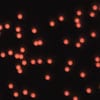

The Dragon Green Intensity Standard is a kit consisting of five individual populations of ~8µm polystyrene-based microspheres dyed with increasing amounts of the Dragon Green fluorophore. Each population is supplied at ~1.5 x 107 beads /mL in a 1mL bottle. Dragon Green is an excellent spectral surrogate for fluorescein, and is suitable for use with fluorescein filter sets. View excitation and emission spectra here.
| Catalog Number | Description |
| DG06M | Dragon Green Intensity Standard (5 Intensities) |
REFERENCES
- Miao, Q, Rahn, Bryant J, R, Lancaster, C, Tourovskaia, A , Neumann, T ,… Nelson, A (2009) Multimodal three-dimensional imaging with isotropic high resolution using optical projection tomography. Proc. SPIE 7262, Medical Imaging : Biomedical Applications in Molecular, Structural, and Functional Imaging
- Choi H, Kim KB, Jun C, Chung TD, Kim HC (2012) A portable microfluidic chip system for cancer diagnosis with simultaneous detection methods. Proc. SPIE 8548, Nanosystems in Engineering and Medicine, 85484A
- Mao X, Lin SS, Dong C, Huang T (2009) Single-layer planar on-chip flow cytometer using microfluidic drifting based three-dimensional (3D) hydrodynamic focusing. Lab Chip, 2009,9, 1583-1589
DRAGON GREEN INTENSITY STANDARD


Fluorescence intensity standards have many applications both in instrument QC programs and in biological analyses. We offer two intensity standard kits for these applications. Our Dragon Green and Flash Red Intensity Standard Kits consist of five populations of ~8µm polystyrene-based microspheres dyed with increasing amounts of their respective fluorophore.
The different intensity populations may serve as relative intensity standards for applications in fluorescence microscopy, where, as internally-dyed beads, they will stand up to the rigors of imaging. The beads may also serve as bright relative intensity or linearity standards for flow cytometry; ask about our QuickCal® linearity template if this is your interest.
NIST TRACEABLE PARTICLE SIZE STANDARDS
Particle size standards may be used to validate sizing instruments across their dynamic ranges. They are suitable for use in the performance of routine instrument calibration checks and corrections, and in the support of practice standards, such as those published by ISO, ASTM International, CEN, and other organizations. Additionally, the use of reference material permits the standardization of results between runs, instruments, laboratories, and over time.
Our NIST Traceable Particle Size Standards are monodisperse polystyrene spheres available in diameters ranging from 40nm-175µm. Suspensions are conveniently packaged in dropper bottles at 1% solids (w/v) in de-ionized water with surfactant, and each bottle is provided with a Certificate of Traceability. See Product Data Sheet 734, NIST Traceable Particle Size Standards, or TechNote 105, Microsphere Size Standards, for more information.
| Catalog Number | Nominal Mean Diameter (µm) | Volume (mL) |
| NT02N | 0.04 | 15 |
| NT03N | 0.06 | 15 |
| NT04N | 0.08 | 15 |
| NT05N | 0.1 | 15 |
| NT06N | 0.15 | 15 |
| NT07N | 0.2 | 15 |
| NT08N | 0.3 | 15 |
| NT09N | 0.4 | 15 |
| NT10N | 0.5 | 15 |
| NT11N | 0.6 | 15 |
| NT12N | 0.7 | 15 |
| NT13N | 0.8 | 15 |
| NT14N | 0.9 | 15 |
| NT15N | 1 | 15 |
| NT16N | 1.5 | 15 |
| NT17N | 2 | 15 |
| NT18N | 2.5 | 15 |
| NT19N | 3 | 15 |
| NT20N | 3.5 | 15 |
| NT21N | 4 | 15 |
| NT22N | 5 | 15 |
| NT23N | 6 | 15 |
| NT24N | 7 | 15 |
| NT25N | 8 | 15 |
| NT26N | 9 | 15 |
| NT27N | 10 | 15 |
| NT28N | 12 | 15 |
| NT29N | 15 | 15 |
| NT30N | 20 | 15 |
| NT31N | 25 | 15 |
| NT32N | 30 | 15 |
| NT33N | 40 | 15 |
| NT34N | 50 | 15 |
| NT35N | 60 | 15 |
| NT36N | 80 | 15 |
| NT37N | 100 | 15 |
| NT38N | 125 | 15 |
| NT39N | 150 | 15 |
| NT40N | 175 | 15 |
REFERENCES
- Jillavenkatesa, A, Dapkunas, S, Lin-Sien HL (2001) Particle Size Characterization. Natl. Inst. Stand. Technol.Spec. Publ. 960-1
- Hassellov, M, Readman, J, Ranville, J, Tiede, K, (2008) Nanoparticle analysis and characterization methodologies in environmental risk assessment of engineered nanoparticles. Ecotoxicology (2008) 17:344–361
- Vogel, R, Anderson, W, Eldridge, J, Glossop, B, Willmott, G (2012) A Variable Pressure Method for Characterizing Nanoparticle Surface Charge Using Pore Sensors. Anal. Chem 84(7, p3125–3131
- Vogel R, Pal AK, Jambhrunkar S, Patel P, Thakur SS, Reátegui E, … & Broom MF. (2017) High-resolution single particle zeta potential characterisation of biological nanoparticles using tunable resistive pulse sensing. Scientific reports, 7(1), 17479. (Carboxylyated PS: 70nm, 100nm, 200nm, 350nm, 400nm; NIST-traceable PS size standards: 100nm, 200nm, 380nm)
- Philips LA, Ruffner DB, Cheong FC, Blusewicz JM, Kasimbeg P, Waisi B, … & Grier DG (2017) Holographic characterization of contaminants in water: Differentiation of suspended particles in heterogeneous dispersions. Water research, 122, 431-439.(0.70µm PS NIST Size Standard; 0.69µm silica microspheres; 0.71µm PMMA microspheres diluted to 10e+7 particles / mL and mixed to create a 3-component sample)
- Proulx K, Hadioui M, & Wilkinson KJ (2016) Separation, detection and characterization of nanomaterials in municipal wastewaters using hydrodynamic chromatography coupled to ICPMS and single particle ICPMS. Anal & Bioanal Chem, 408(19), 5147-5155.
Our StarLight™ Calibration Slides feature vibrant ~6µm fluorescent microspheres dyed with a single fluorophore for basic imaging checks and calibration for fluorescence microscopes. Our four standard versions are appropriate for use with common microscope filter sets: Glacial Blue (360, 450), Dragon Green (480, 520), Envy Green (525, 565), and Flash Red (660, 690). The calibration slides are available individually or as the full 4-slide collection. See fluorophore spectra here.
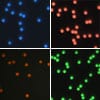


Current applications in flow cytometry extend far beyond traditional lymphocyte immunophenotyping. Flow cytometry is used for such varied applications as cell cycle analysis, telomere length determination, microvesicle analysis, receptor occupancy, phagocytosis and many other studies. We offer standards to support these types of assays, for the standardized instrument set-up and comprehensive quality assurance essential for achieving accurate and consistent results within a study, and generating comparable data between instruments and laboratories.